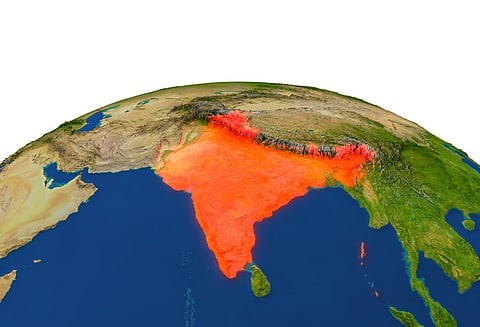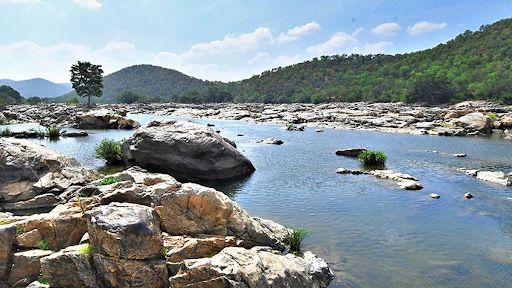




Source: TIMES OF INDIA
Disclaimer: Copyright infringement not intended.
Frustrated by decades of neglect villagers of Kyampur have united to construct their own bridge over Magai River using crowdfunding, voluntary labor & engineering expertise highlighting rural Indian spirit of self-reliance & failures of public infrastructure delivery.
|
Attribute |
Details |
|
Origin |
Dubawan village, Azamgarh district, Uttar Pradesh |
|
Course |
Flows through Mau & Ghazipur districts; joins Tamsa River in Ballia district which eventually merges with Ganges |
|
Length |
Approximately 25 km within Ghazipur district |
|
Width at Kyampur |
Approximately 70 feet |
|
Tributary of |
Tamsa River (which is a tributary of Ganges) |
|
Nearby Villages |
Muhammad Pur, Hata, Silaich, Karimuddinpur, Mahend, Nasrat Pur, Kyampur, among others |
|
Economic Importance |
The river banks are known for cultivating betel leaves (pan) contributing to local economy |
|
Infrastructure Issues |
Lack of bridges has led to isolation of villages necessitating long detours & posing safety risks, especially during monsoons |
|
Recent Developments |
Villagers frustrated by decades of inaction have initiated construction of a 108-foot bridge through crowdfunding & community effort |
|
Attribute |
Details |
|
Origin |
The Tamsa River originates from Vindhya Hills in state of Madhya Pradesh, India. |
|
Course |
Flows through districts of Madhya Pradesh, Uttar Pradesh & Bihar eventually merging with Ganges River. |
|
Length |
Approximately 250 km long. |
|
Tributaries |
Main tributary Magai River. |
|
Major Districts |
Madhya Pradesh Originating district. Uttar Pradesh Mau, Azamgarh, Ballia, Ghazipur etc. Bihar Merging with Ganges River in eastern region. |
|
Width |
Varies along course, with certain regions reaching 200–250 meters in width. |
|
Major Confluence |
Confluences with Magai River & then feeds into Ganges River near Ballia. |
|
Importance |
The Tamsa River is a vital water source for agricultural irrigation especially in Uttar Pradesh. |
|
Flooding Issues |
Flooding occurs in certain regions of Tamsa basin especially during monsoon months. |
|
Economic Contributions |
Supports agriculture in region, especially for crops such as paddy, wheat & sugarcane. |
|
Infrastructure |
Several bridges & embankments are constructed along Tamsa River to aid transportation & prevent flooding although some rural areas still lack infrastructure. |
|
Aspect |
Pros |
Cons |
|
Empowerment |
Promotes self-reliance & ownership among community members |
May lead to friction with local authorities or legal compliance gaps |
|
Speed of Implementation |
Faster than bureaucratic procedures & red tape |
Lack of formal technical assessment may delay or compromise quality |
|
Cost-Effectiveness |
Utilizes local resources, volunteer labor & donations, reducing costs |
Funding shortages can stall project midway |
|
Social Capital |
Builds strong community bonds & civic engagement |
Over-dependence on individual leaders or donors |
|
Demonstration Effect |
Inspires other rural areas to take initiative in solving local problems |
Risks setting a precedent of bypassing state responsibility |
|
Technical Expertise |
In this case, led by a retired army engineer with civil expertise, ensuring structural reliability |
In general cases, lack of engineering input could be hazardous |
|
Government Accountability |
Puts pressure on state to act & creates a demand-driven governance culture |
May let government off hook from its responsibility if not followed up by advocacy |
|
Sustainability |
Strong emotional & practical investment in upkeep by villagers |
Without state handover, long-term maintenance may be unsystematic |
For more such articles, please refer to IAS GYAN
Sources: URBANACRES
|
PRACTICE QUESTION Q. Examine significance of Tamsa River for agricultural & socio-economic landscape of Uttar Pradesh & Bihar. Discuss challenges faced by river basin including flood risks & infrastructural concerns. |







© 2025 iasgyan. All right reserved